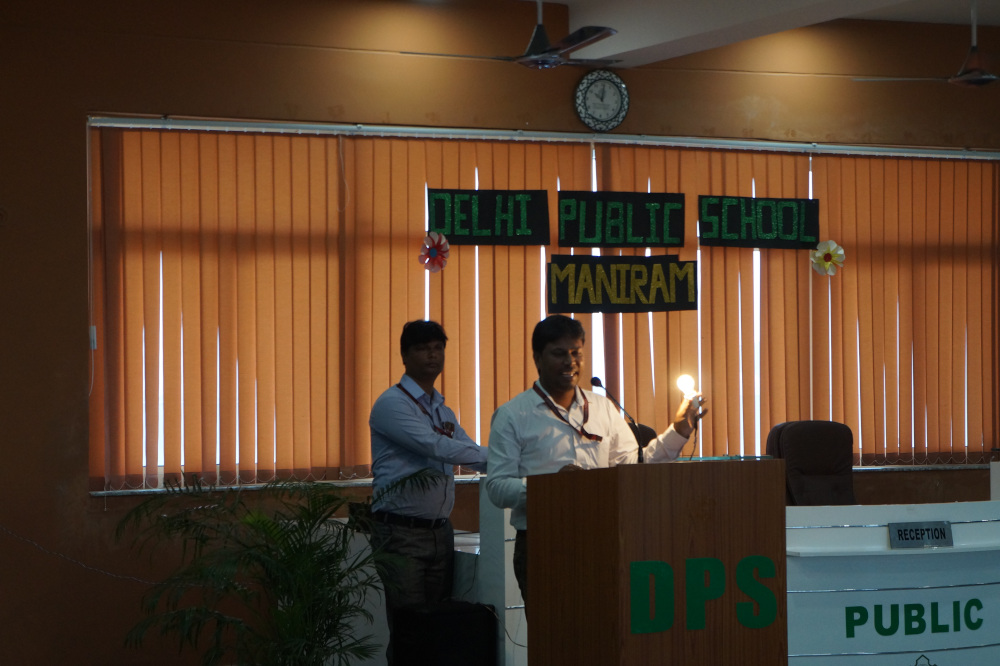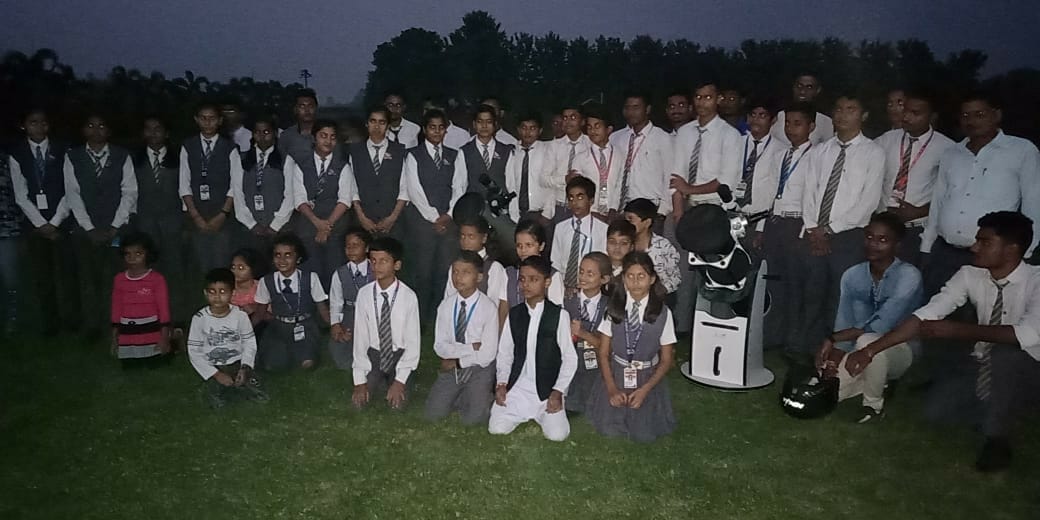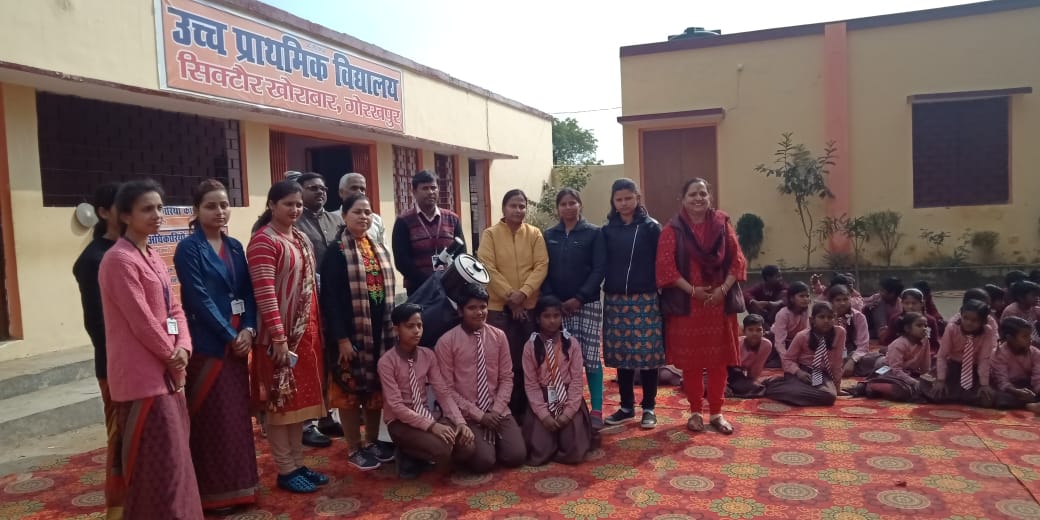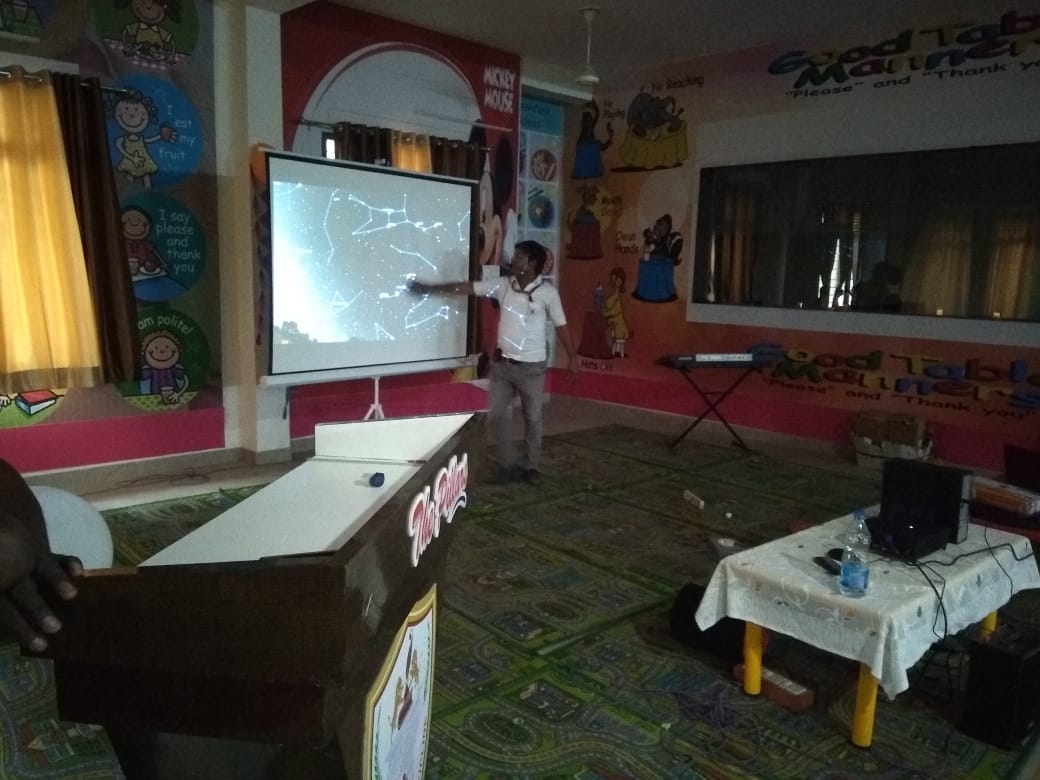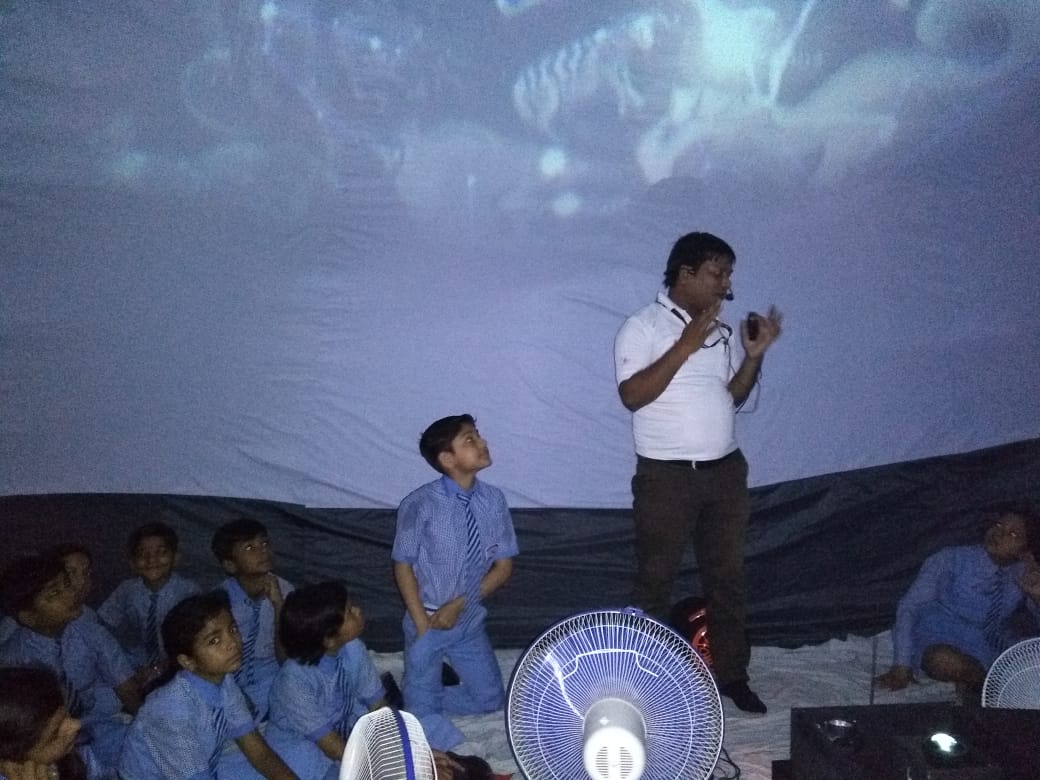About Us
Who we are
VSRC is a non profitable company has been launched in October, 2017 by group of scientist and engineers in various field of Science & Technology that has to do with space science. VSRC scientists study things in the our solar system, and even farther away into space .
VSRC helps to expose students quickly to the Theories and Laws of science with the help of different VSRC Educational Programs such as Astronomy, Magic of Science, Space Robotics, Mathematics of Space Science Etc.
VSRC Advisory Committee.
- DR. SUBASH CHANDRA MALLICK: Pursuing challenging research and development in the area of Electrochemical Science & Technology. Patents: Tondepu Subbaiah, Subash Mallick, Radhanath Prasad Das, Krushna Gopal Mishra(2010), An Electrochemical Process For The Preparation Of Nickel Hydroxide From Nickel Nitrate Solution, Indian Patent No. 242167.
- DR. RAJA SINGH: Expert Trainer of HR/Motivation in Different Companies.
- DR. UDIT SURYA MOHANTY: Sr. Scientist, Taiwan.
- DR. RAMESH SAHANI: Assistant Professor (Physical), Department of Anthropology, Punjab University, Chandigarh.
- MR. S.B. PANDEY: Sr. Lecturer (Adarsh Higher Secondary School Govt. Of WB).More than 30 years of experiences in field of teaching.
- MR. PRATAP DAS: Mathematician(I-Brain Institution Odisha).
- MS. KRISHNA CHATTERJEE: M.A., B.Ed., M.Phil. More Than 25 Years of Experiences In Field Of Teaching.
- DR. PULAKES PURKAIT: M.Sc., Ph.D, Department of Anthropology , Punjab University, Chandigarh.

Research and Discovery
Our ongoing research
How high energy overcome the electrical repulsion between the protons.
Relationship between charge and energy.
Graviton.
Space time fabric
Dark matter and Dark energy.
Mass-Energy Equivalance
Public Place Program
Public Place Program








Educational Program
Educational Program for Grade K-12
Exploring The Night Sky With Laws Of Science .
This program will give students a close look at theories and law of science, how universe work and working of solar system. We present live space show program in Four modules.
- Sky Introduction With The Help of Software (Constellations & Zodiacal Signs).
- Theories, Hypothesis, Laws, Facts & Extra Activities (Explain Different Theories, Principal Etc.)
- Star Gazing (With The Help Of Telescope).With The Help Of Telescope We Perform Sky Watch In Which Students See Sun Spots, Moon Craters, Planets, Nebula, Galaxies Etc.
- Quiz (Certificates & Rewards).
Students will learn: Stars In The Night Sky, The Moon And Planets, Reflecting And Emitting Light , Constellation And Zodiacal Signs , The Shapes And Stories Of Some Currently Visible Constellations,Celestial Events Just Like Solar Eclipse, Lunar Eclipse , Origins And Composition Of The Universe,Structure Of The Universe,How Universe Govern , Secrets Of The Cosmos , Theoretical Modeling Of Star And Planet Formation , Solar System , Exoplanets And Their Origins etc.

Bringing Wonders Of The Universe Into The Class Room
The six-meter digital mobile planetarium can bring the 360° experience into school campus, seating up to 50-70 students at one time. The planetarium comes with an experienced astronomy specialist who can present live planetarium shows, play 360° full dome films, and answer student´s questions. All presenters are full-time science communicators with university-level astronomy/astrophysics qualifications. The digital projection system giving exquisite views of the night sky, and takes on a digital journeys to the planets, stars, and distant galaxies.
Different Activities, Exhibition Of Drawing, Posters, Sculptures ETC.
Quiz & Rewards
Features of Planetarium Show
- Learning About Science Through Our Portable Planetarium Will Bring Plenty Of "Oohs" And "Ahs" More Than That, It Will Inspire Students To Engage In A Better Understanding Of The World Around Them.
- The Shows Are Customized Class Wise And Designed For Students From KG To Class 12, Keeping In Mind Their Acumen.
- Eradicates The Cost Of Traveling To Fixed Planetariums.
- Planetarium Shows Cover Topics From The School Curriculum And Also Lot More That Is There In The Universe To Discover.
- Students Will Understand About Night Sky Constellations And Zodiacal Signs.
- Because Of The Affective Nature Of VSRC Planetarium Experiences, Students Are Motivated To Pursue Interests In Science, Technology, Engineering, & Mathematics (STEM) Fields And To Consider Related Career Paths.
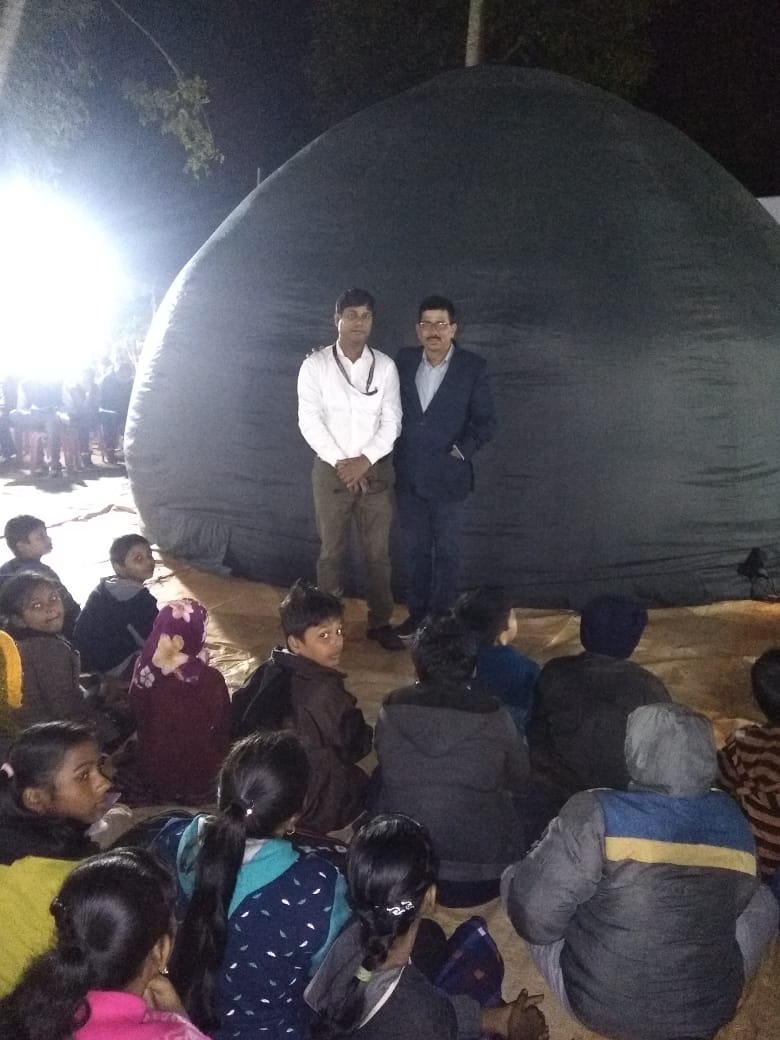
Space Robotics
Space Robotics Robotics Is A System That Contains Sensors, Control Systems, Manipulators, Power Supplies And Software All Working Together To Perform A Task. Robots Are Ideal For Use In Space. They Do Not Get Tired Or Need To Stop For Lunch. They Can Survive In The Hazardous Conditions Of Space. "Intelligent" Robots Can Even Carry Out Difficult Tasks Without Human Intervention.
Why Robotics :
- Actively Become Involved In Their Own Learning Process.
- Develop Their Interests In Math And Scientific Technology.
- Students Will Learn How To Apply Scientific Principles To Real-Life Situations.
- Engage Students In Complex, Strategic Problem-Solving, Computational Thinking And Higher-Order Thinking - Pre-Requisite In Successful In Research In Science And Engineering.
- Build Engineering Intuition Through Constant Engineering Process.
- Emphasize Meaningful Problem-Based Learning Thru Integration And Application Of Knowledge.
- Cultivate The Passion To Success. Make Achieving Goals As A Habit.
Feature Of VSRC Robotics Program
- Students Will Learn Space Robotics Step-By-Step.
- No Previous Experience Is Required.
- Students Learn How To Make Robots Respond To The Environment Using Light, Sound, Touch And Ultrasonic Sensors.
- Robots Are Programmed Using An Icon-Based Programming Language That Lets Them Quickly Get Their Robots Moving, While Giving Them A Good Foundation For How Programming Languages Work.
- Students Work Together To Learn Engineering And Design Of Robotics On Land, In The Air And Underwater.

Magic of Science
The 'Magic of Science' is a magic show which teaches various laws of science. It's magic tricks that look like "magic," a trick with a secret. However, with a magic of science, there is no secret, there's a scientific concept from either physics or chemistry - that looks like "magic. Science, studies in chemistry, light, magnetism, optical illusions, physics, and mathematics are all demonstrated in an energetic performance perfect for children. Everything performed has a scientific principle behind it.. The objective is to promote the value of knowledge, while exhibiting the enticing benefits of earning a strong education.
Reason To Teach Magic Of Science:
- Students learn the basic concept of science.

Space Mathematics
These Contain Activities Comprise a Series of Practical Mathematics Applications In Space Science.
Students Will Learn:
- Students Investigate Science And Mathematics Concepts Such As Gravity ,Solar Energy, Stars, Objects In The Solar System.
- About Scientific Notation And Distance, Rate And Time, Rockets And Spacecraft, And Telescopes.
- Mathematical Topics Include Algebra, Geometry, Trigonometry And Calculus.
- Through Mathematics And Reading Activities, Students Learn How To Search For Trends And Correlations In Data.
- It Covers Glimpses Of Modern Engineering Issues That Arise In Designing Satellites To Work In Space.
- We Provide Background Information Providing Insight Into The Basic Phenomena Of The Sun-Earth System.
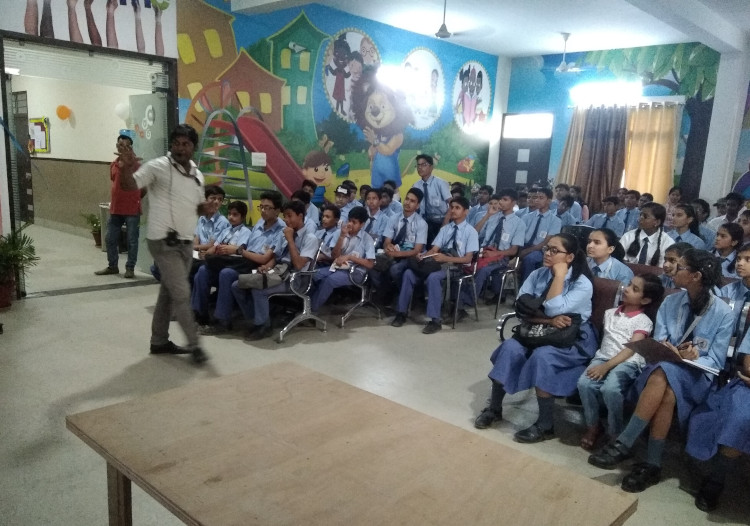
Space STEM Experiment And Projects
These Contain Activities Comprise a Series of Experiments and Projects Related In Space Science.
- Weather Balloon Experiment.
- Rocket Launching Experiment.
- Mars Rover Landing Experiment.
- Spectroscopy
- Finding of Exo Planet.
- Telescope as Time Machine
- De-twinkling the Stars
- Parachute Egg Dropping Project.
- Stories in The Sky Challenge.
- Light & Inverse Square Law.
- Searching Exoplanets With Kepler Law.
- Role of PI in The Universe.
- Roving.
- Evaluating a Lunar Eclipse.
- Tauching Dawn Experiment.
- ETC.
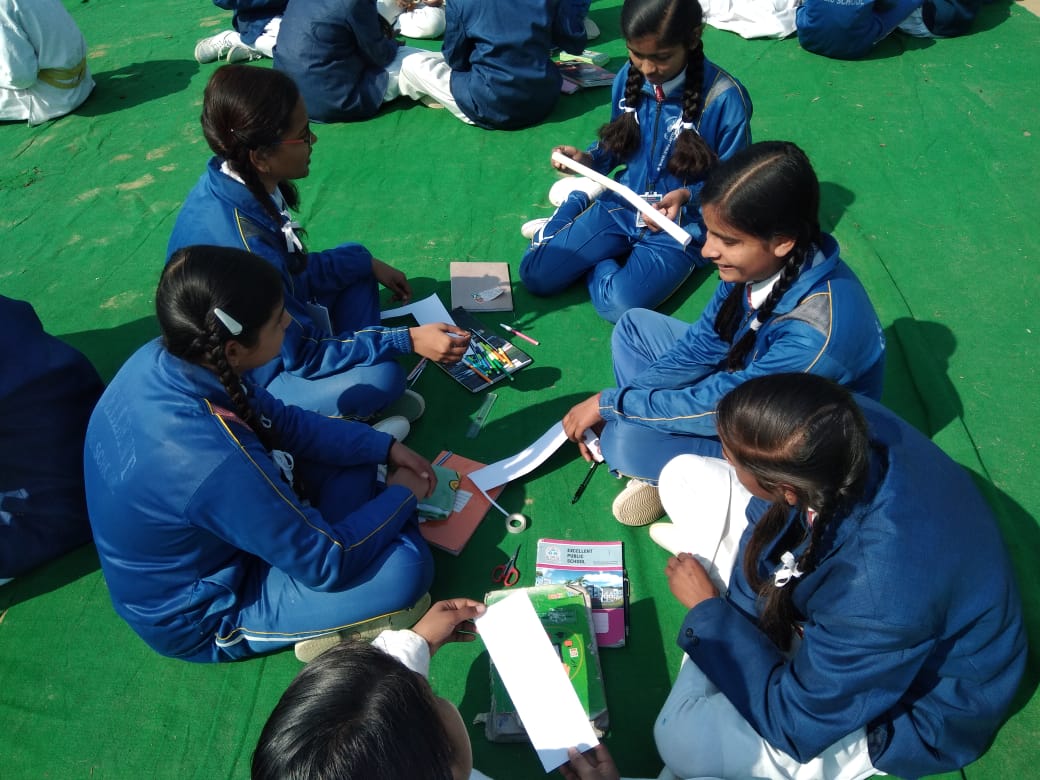
Launch Your Career
This is a motivational training program for students.
- How to protect your body from Alcohol, Smoking, Pain, Drugs etc.
- How to write in Exam.
- How you can develop your personality.
- Tips for Health Management.
- Environmental Awareness
- Concept of Energy.
- Motivational Training.
- Positive thinking towards achieving its goal.
- Force of Relationship.
- Importance of Time-Management.
- Increase of memory power and utilization
- Money Management.
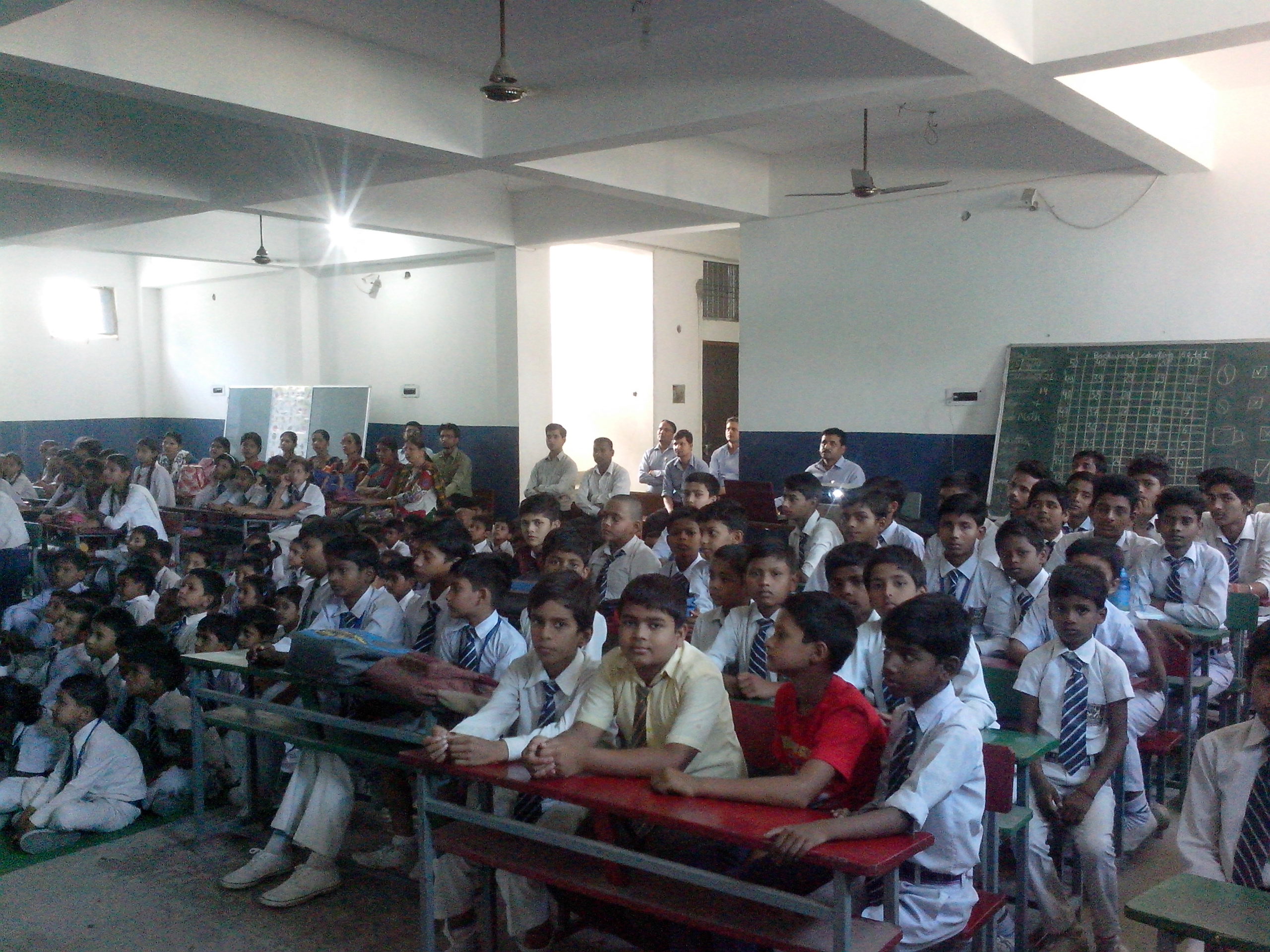
Language Of Nature
Coming Soon.....
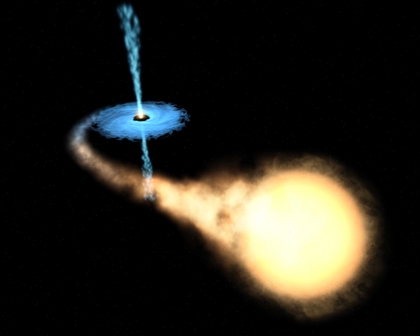
Camp
Summer/Winter Camp
The VSRC Educational Camp purpose is to encouraged students to study mathematics, science, and engineering and computer science by interacting with VSRC experts. VSRC bring students together the likely future leaders in space activity so that they learn at an early stage about space science and working of universe. VSRC have a broad interdisciplinary focus on space/aerospace coupled with science, engineering, technology .It is a rigorous, immersive experience that will challenge the participants and push them outside their comfort zones. It offers interns an intense learning experience that is either space- or aeronautics-based. VSRC Educational program will provide exciting and unforgettable summer/winter experiences.
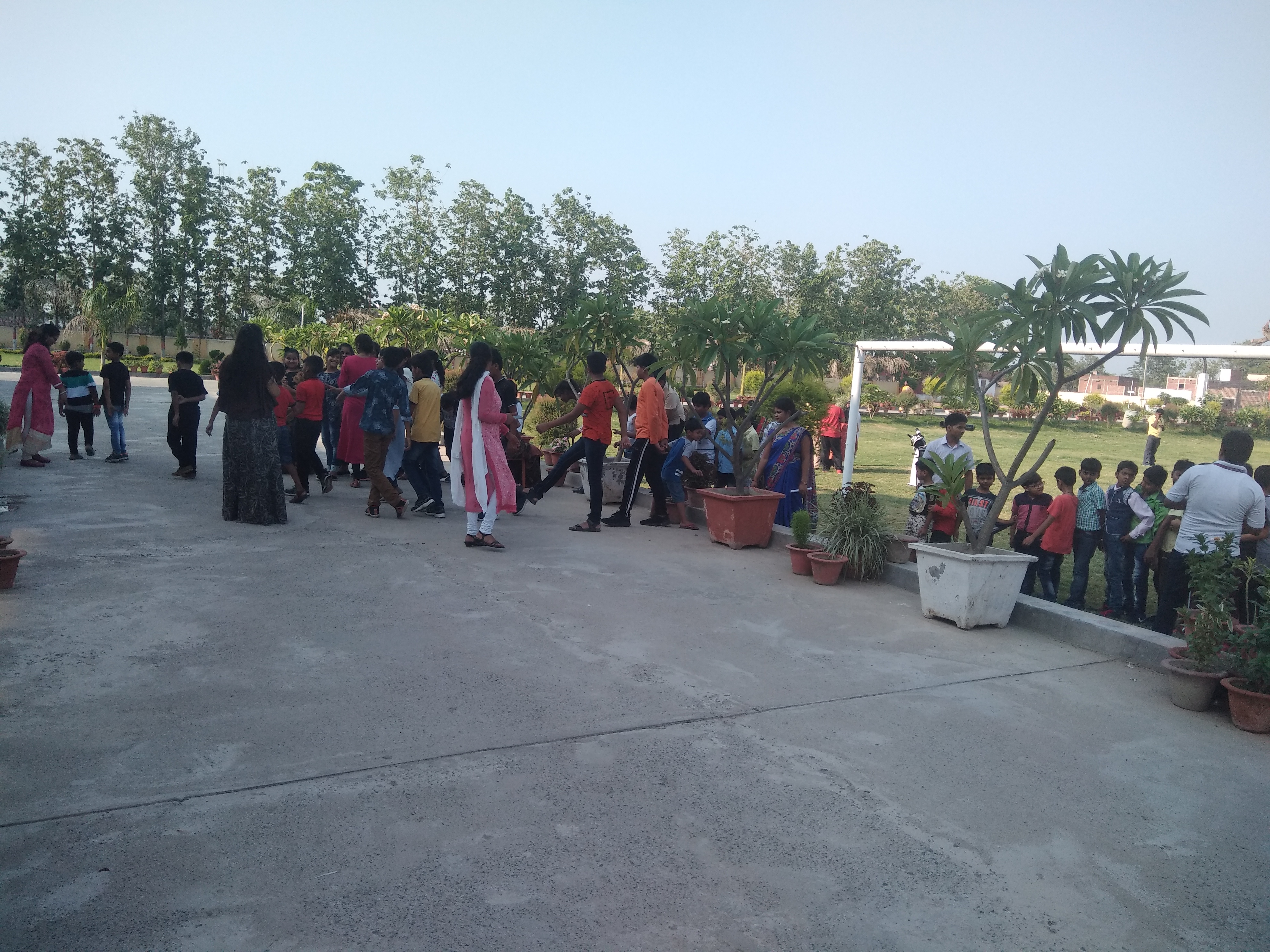
VSRC
Day Time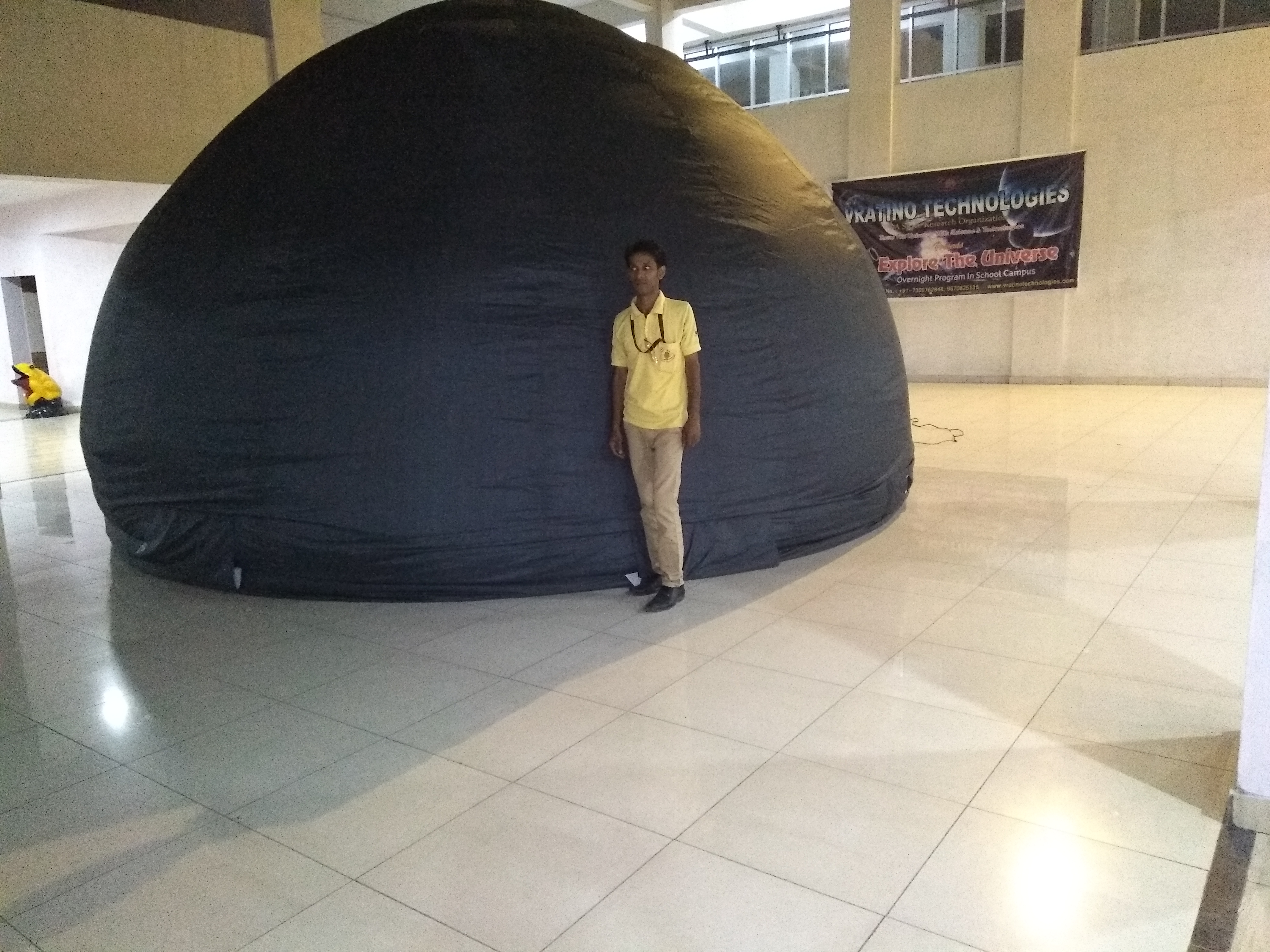
VSRC
Night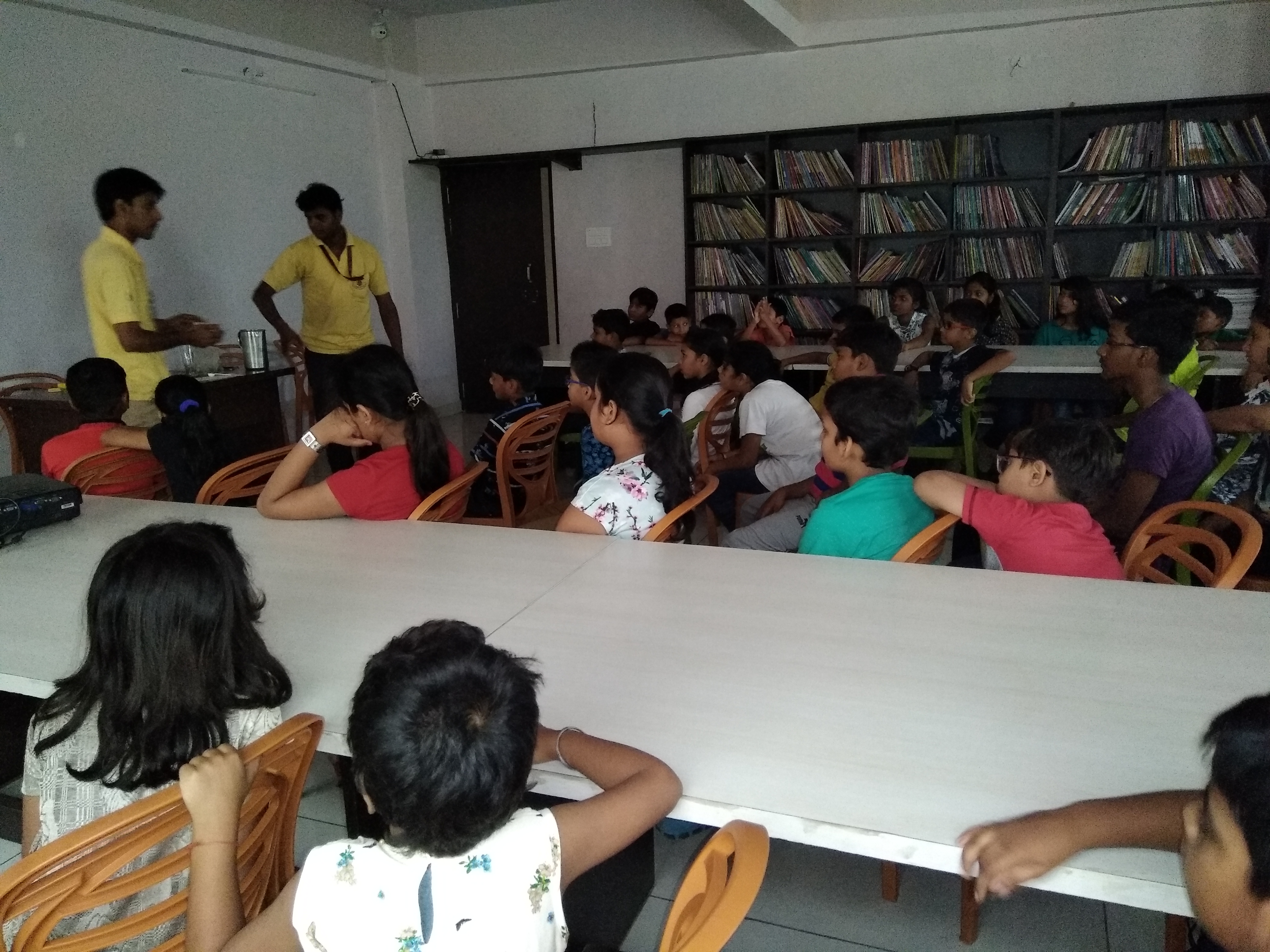
VSRC
Morning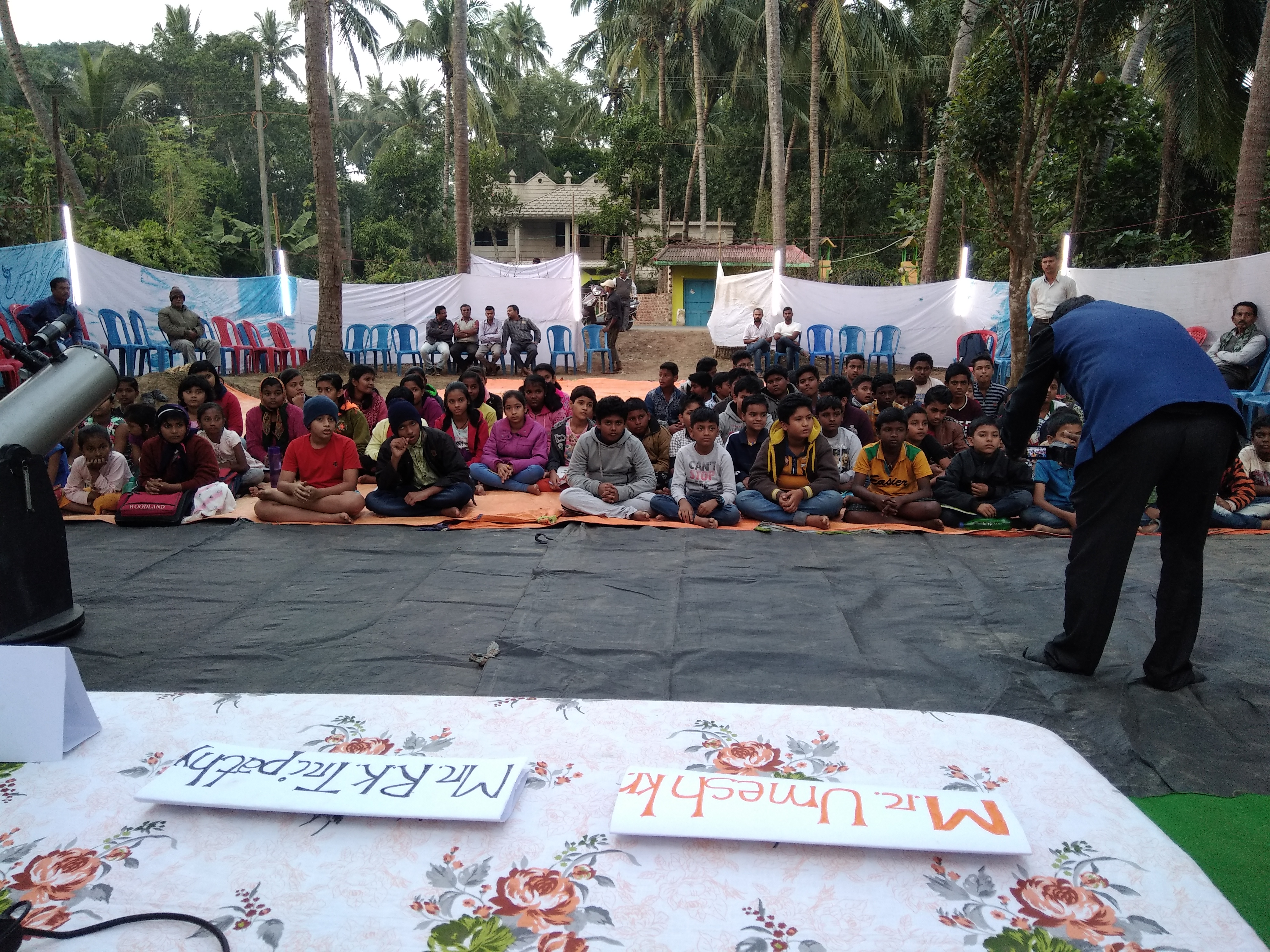
VSRC
EveningInternships
Internships At Research Center
VSRC offers a 4-8 week summer and 2-4 week winter internship for students pursuing degrees in science; engineering, technology, and mathematics have initiatives to support students in the area of space science and technology.
We also provide an opportunity for the student community to carry out their project work as part of their academic curriculum. In order to make use of good talents from the academic institutes, professional students have been given permission to perform project work in the area of design and development which are useful to the organization.
VSRC internships provide hands-on practical experiences that challenge and inspire students.
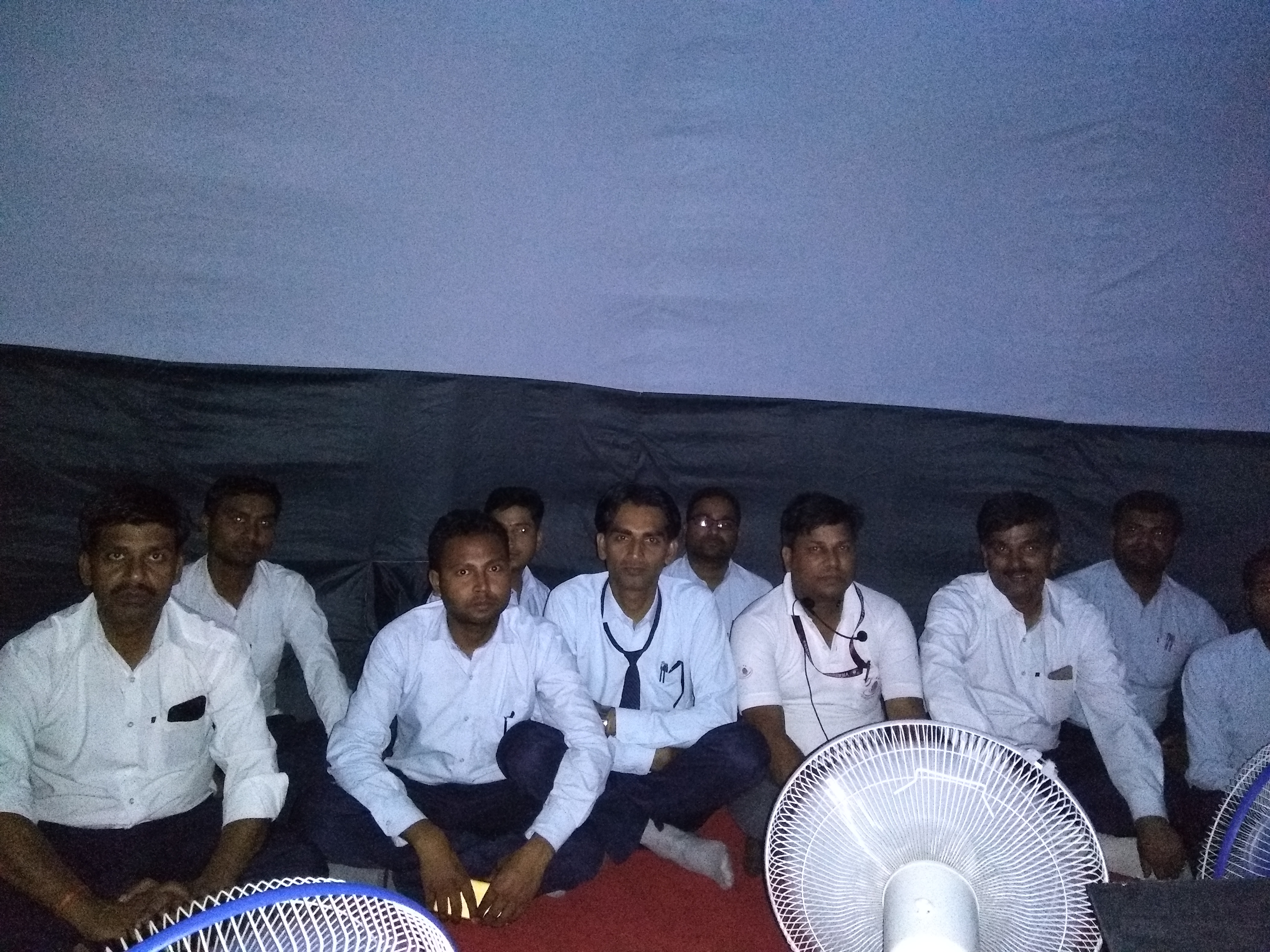
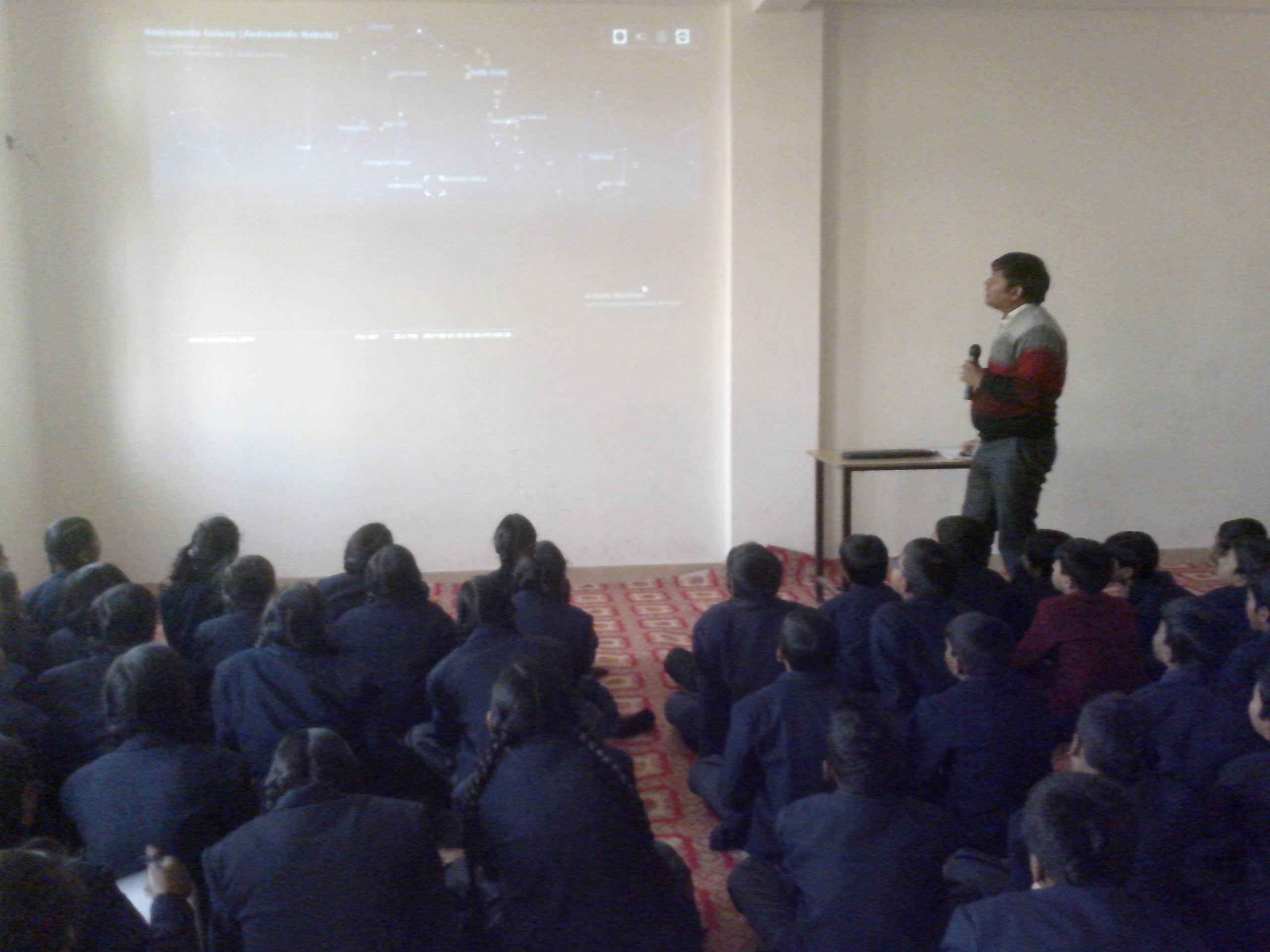
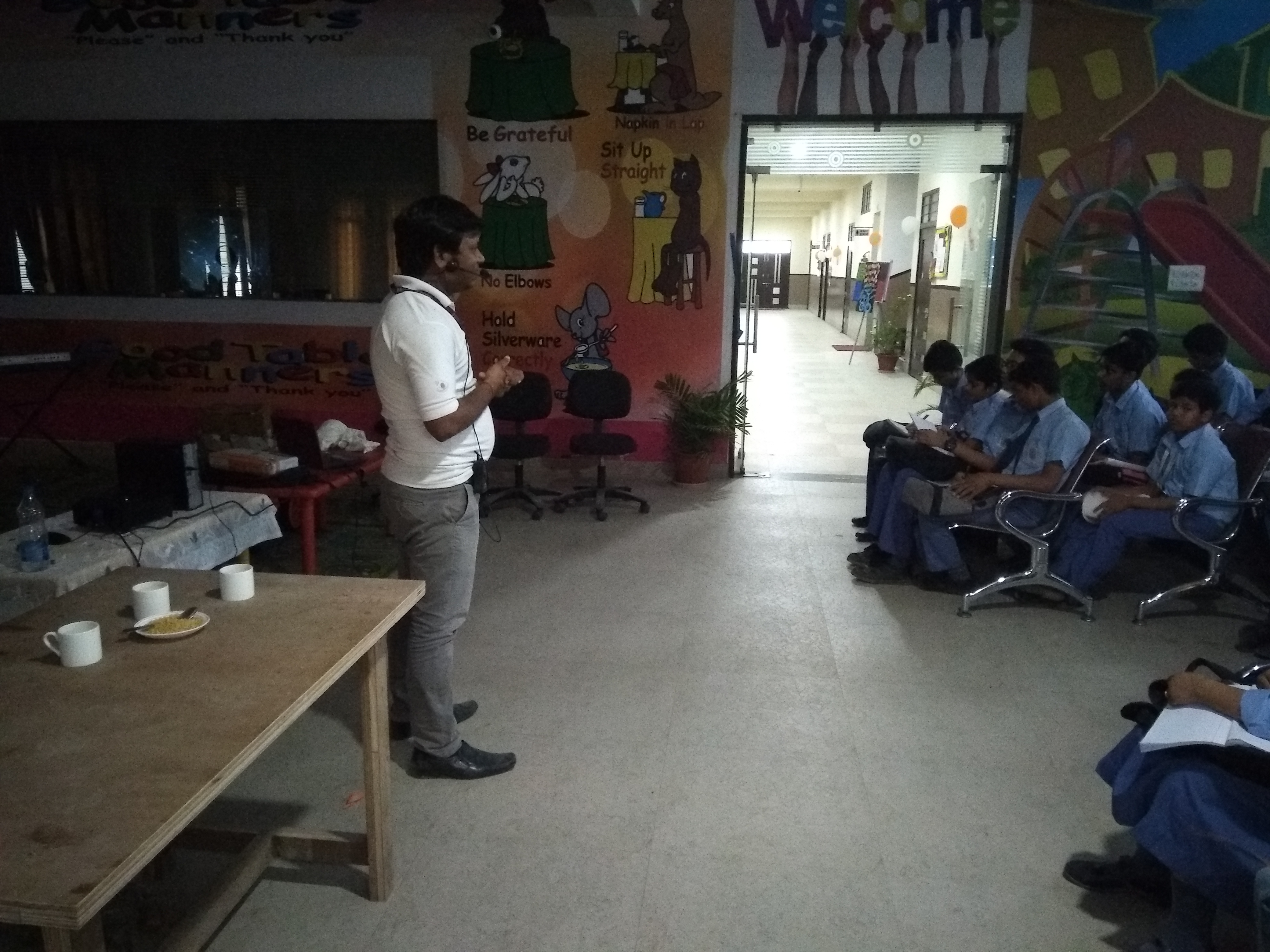
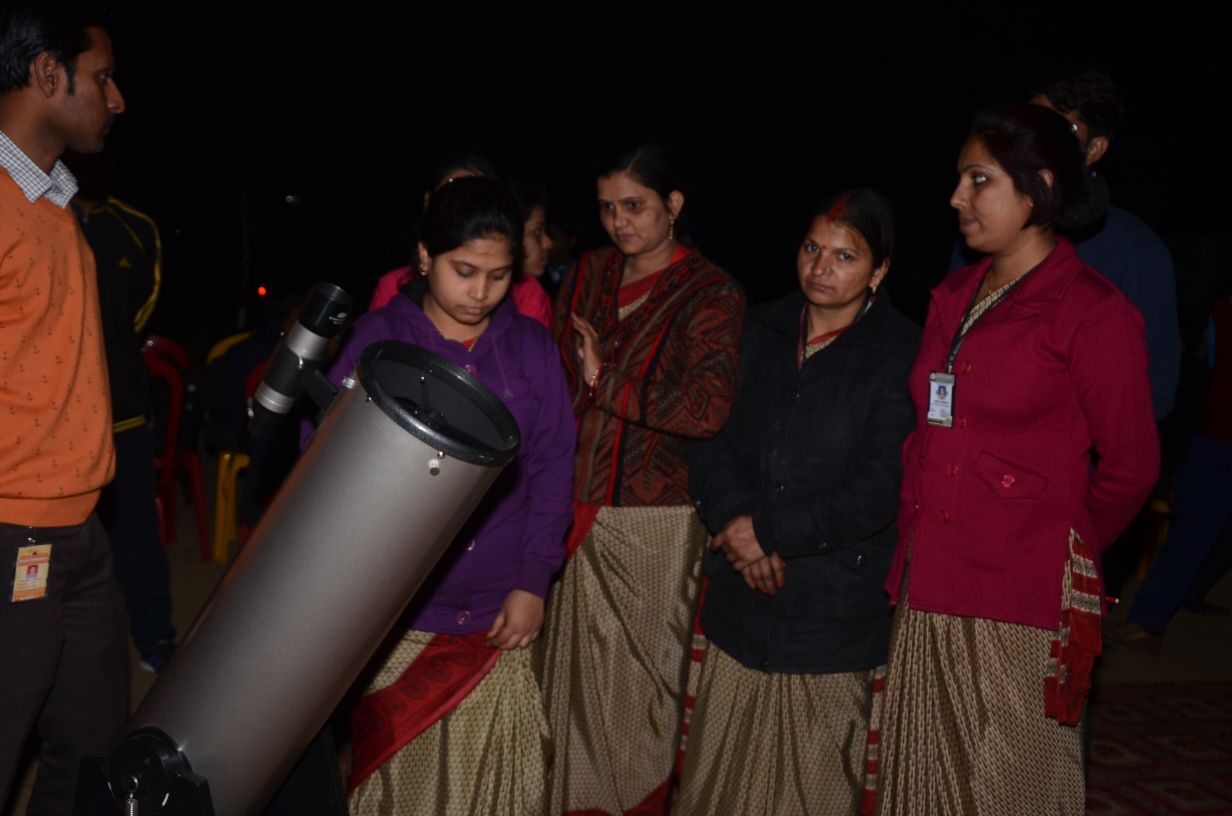
Events
Celestial events in 2021
-
January
January 2, 3 - Quadrantids Meteor Shower.
January 13 - New Moon.
January 24 - Mercury at Greatest Eastern Elongation. Look for the planet low in the western sky just after sunset.
January 28 - Full Moon.
-
February
February 11 - New Moon.
February 27 - Full Moon.
-
March
March 6 - Mercury at Greatest Western Elongation. Look for the planet low in the eastern sky just before sunrise.
March 13 - New Moon.
March 20 - March Equinox. The Sun will shine directly on the equator and there will be nearly equal amounts of day and night throughout the world.
March 28 - Full Moon.
-
April
April 8/9: Earthshine Nights-The Waxing and Waning Crescent Moon phases in April and May are the best time to see earthshine, where the unlit part of the Moon becomes visible. It is also known as Da Vinci glow.
April 12 - New Moon.
April 15/16: Earthshine Nights-The Waxing and Waning Crescent Moon phases in April and May are the best time to see earthshine, where the unlit part of the Moon becomes visible. It is also known as Da Vinci glow.
April 22, 23 - Lyrids Meteor Shower.
April 27 - Full Moon, Supermoon.
-
May
May 6, 7 - Eta Aquarids Meteor Shower.
May 6/7: Earthshine Nights-The Waxing and Waning Crescent Moon phases in April and May are the best time to see earthshine, where the unlit part of the Moon becomes visible. It is also known as Da Vinci glow.
May 11 - New Moon.
May 14/15: Earthshine Nights-The Waxing and Waning Crescent Moon phases in April and May are the best time to see earthshine, where the unlit part of the Moon becomes visible. It is also known as Da Vinci glow.
May 17 - Mercury at Greatest Eastern Elongation. Look for the planet low in the western sky just after sunset.
May 26 - Full Moon, Supermoon.
May 26 - Total Lunar Eclipse. A total lunar eclipse occurs when the Moon passes completely through the Earth's dark shadow, or umbra. The eclipse will be visible throughout the Pacific Ocean and parts of eastern Asia, Japan, Australia, and western North America.
-
June
June 10 - New Moon.
June 10 - Annular Solar Eclipse. The path of this eclipse will be confined to extreme eastern Russia, the Arctic Ocean, western Greenland, and Canada. A partial eclipse will be visible in the northeastern United States, Europe, and most of Russia.
June 21 - June Solstice.
June 24 - Full Moon, Supermoon.
-
July
July 4 - Mercury at Greatest Western Elongation. Look for the planet low in the eastern sky just before sunrise.
July 10 - New Moon.
July 24 - Full Moon.
July 28, 29 - Delta Aquarids Meteor Shower.
-
August
August 2 - Saturn at Opposition.
August 8 - New Moon.
August 12, 13 - Perseids Meteor Shower.
August 19 - Jupiter at Opposition.
August 22 - Full Moon, Blue Moon.
-
September
September 7 - New Moon.
September 14 - Neptune at Opposition.
September 14 - Mercury at Greatest Eastern Elongation. Look for the planet low in the western sky just after sunset.
September 20 - Full Moon.
September 22 - September Equinox.
-
October
October 6 - New Moon.
October 7 - Draconids Meteor Shower.
October 20 - Full Moon.
October 21, 22 - Orionids Meteor Shower.
October 25 - Mercury at Greatest Western Elongation. Look for the planet low in the eastern sky just before sunrise.
October 29 - Venus at Greatest Eastern Elongation.
-
November
November 4 - New Moon.
November 4, 5 - Taurids Meteor Shower.
November 5 - Uranus at Opposition.
November 17, 18 - Leonids Meteor Shower.
November 19 - Full Moon.
November 19 - Partial Lunar Eclipse. The eclipse will be visible throughout most of eastern Russia, Japan, the Pacific Ocean, North America, Mexico, Central America, and parts of western South America.
-
December
December 4 - New Moon.
December 4- Total Solar Eclipse. A partial eclipse will bee visible throughout much of South Africa.
December 13, 14 - Geminids Meteor Shower.
December 19 - Full Moon.
December 21 - December Solstice.
December 21, 22 - Ursids Meteor Shower.
News
Our News Coverage
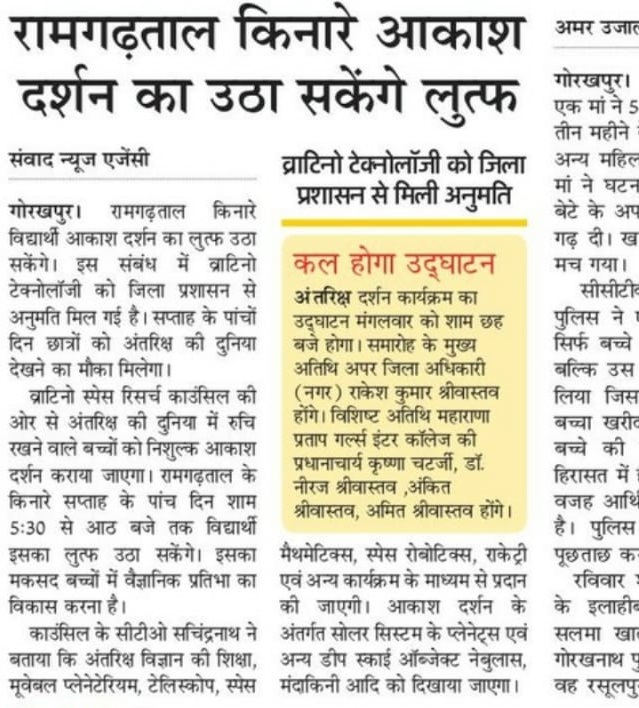
Amar Ujala
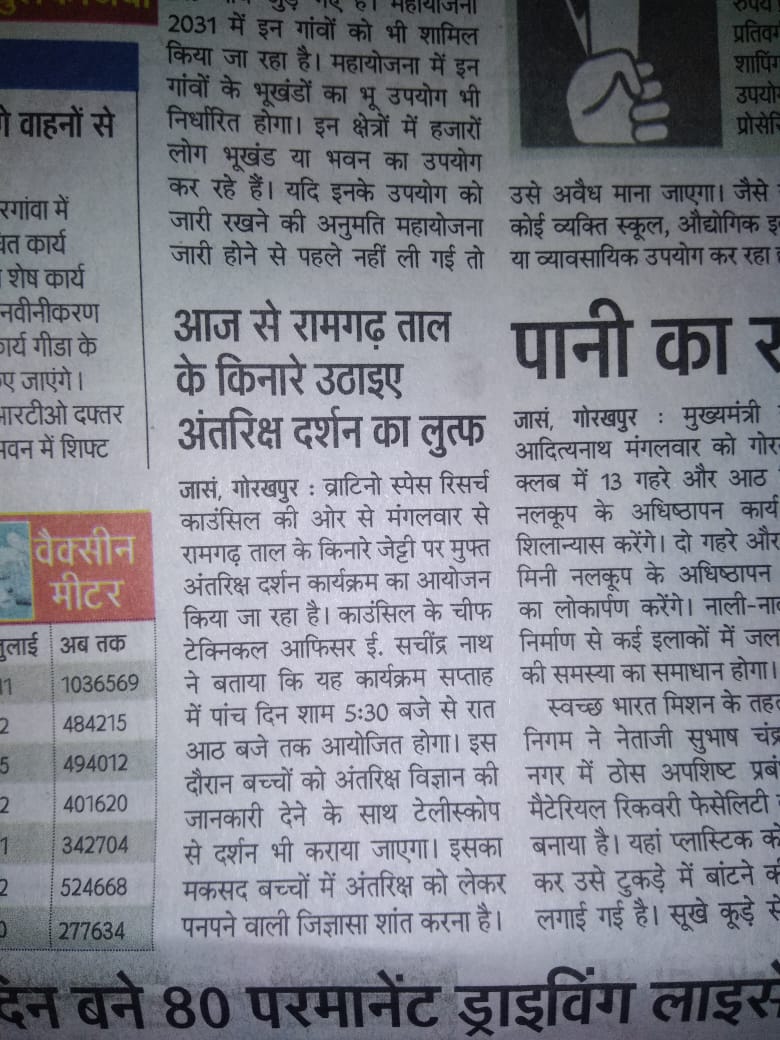
Dainik Jagran
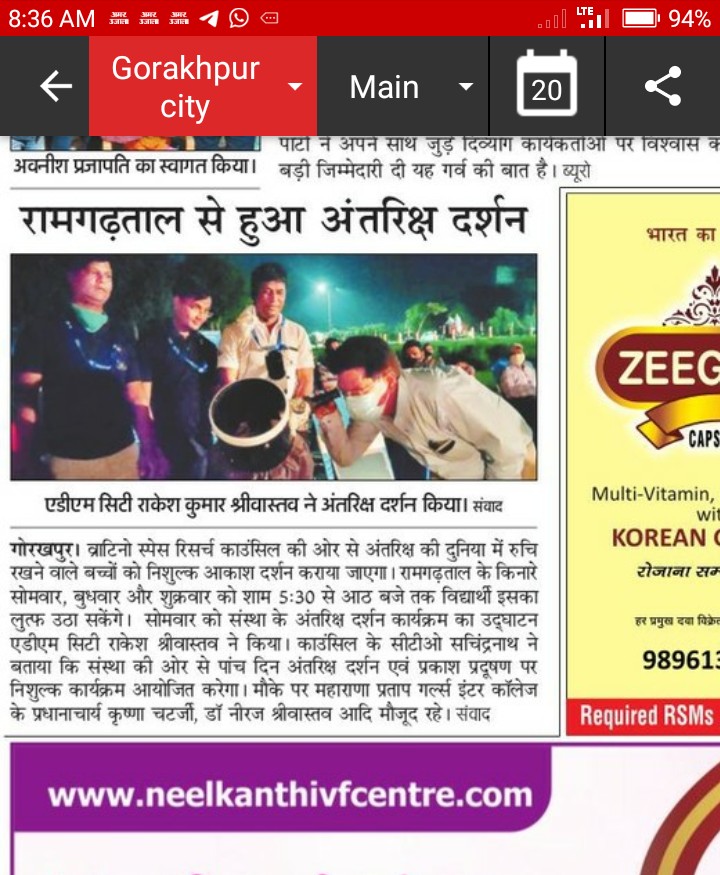
Amar Ujala
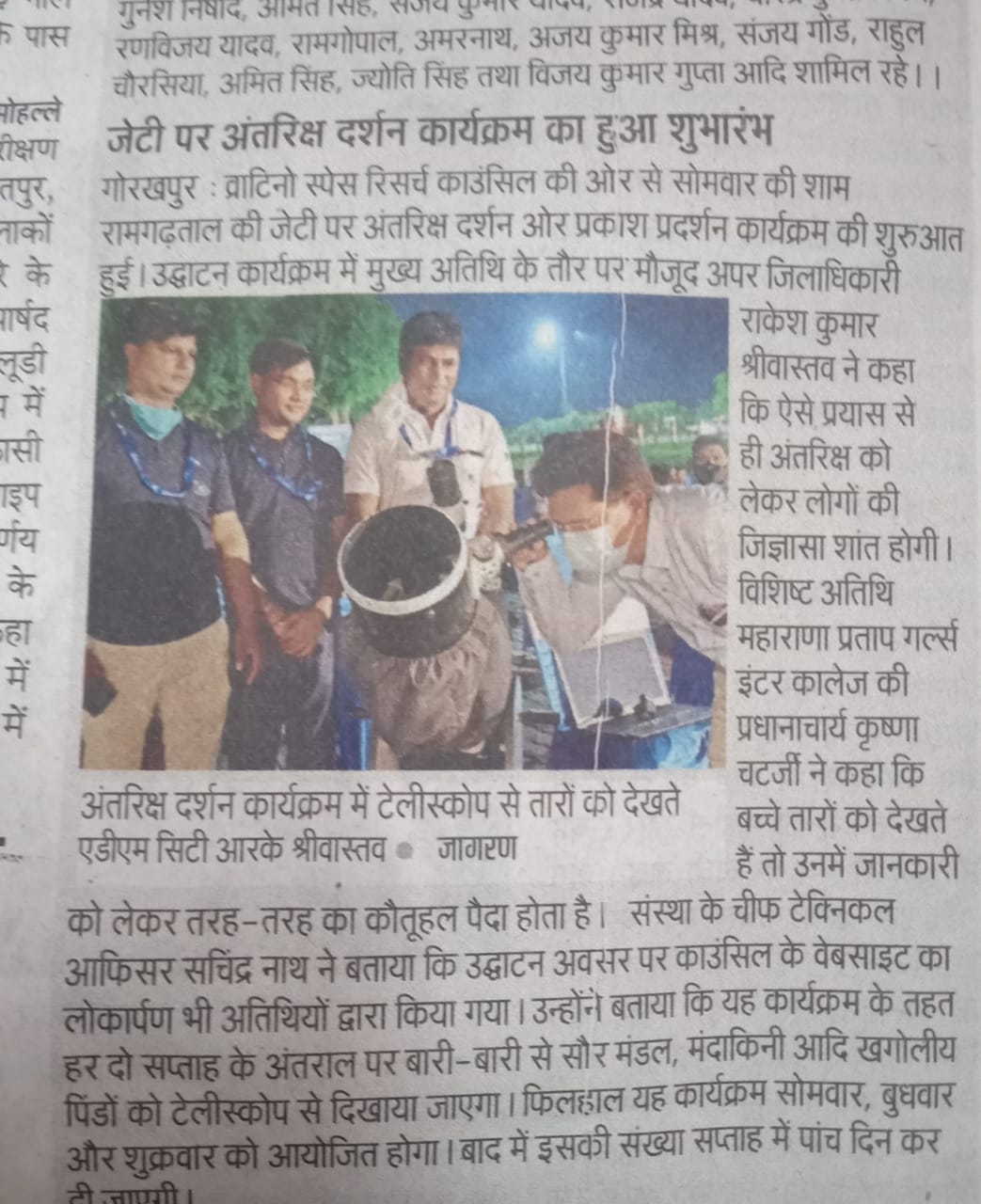
Dainik Jagran
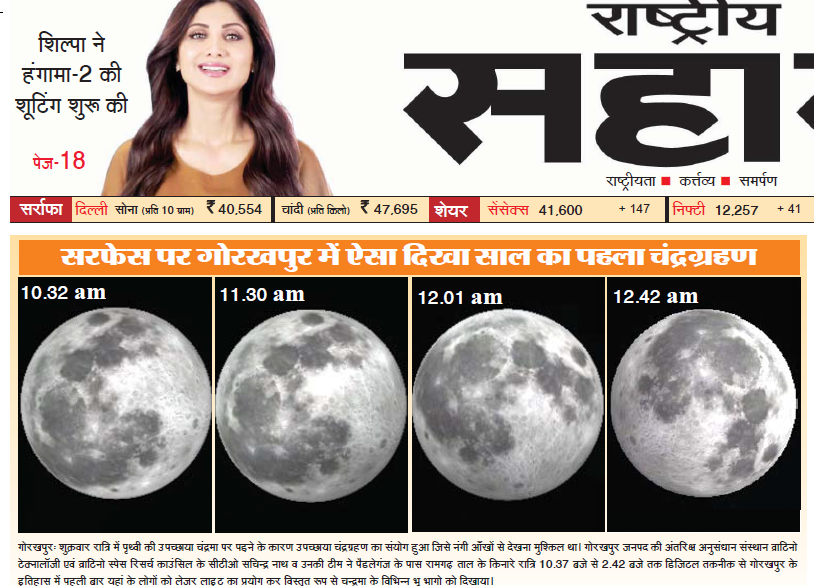
SNB
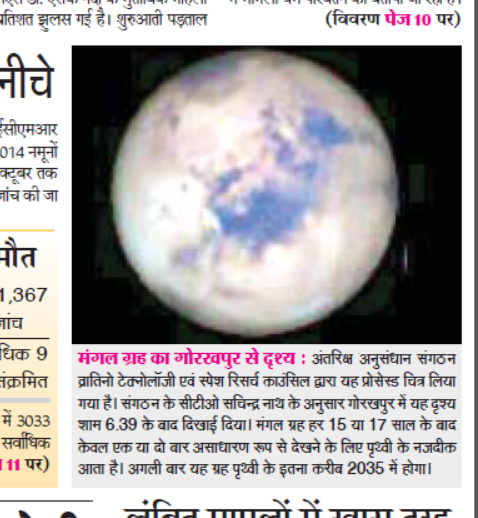
SNB
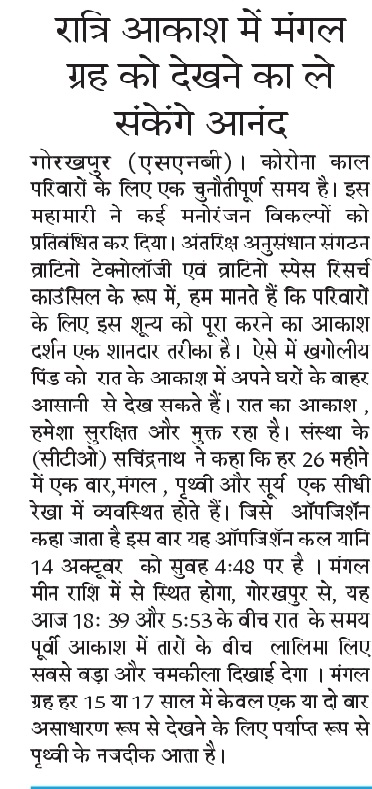
SNB
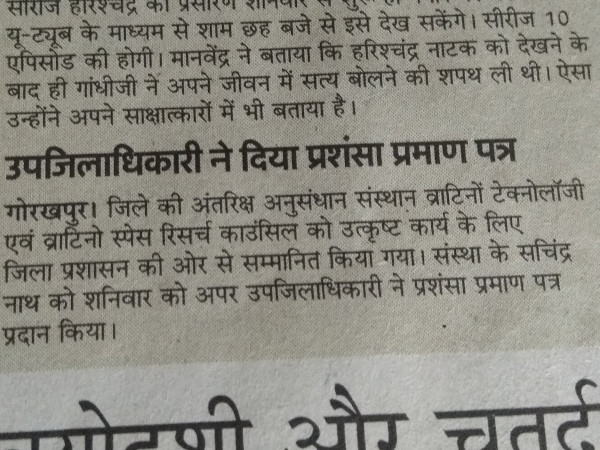
Amar Ujala
Contact
Contact Us
Location:
SBI Buliding Siktaur,Near Sahara Estate Gate No-1,
District-Gorakhpur,State-Uttar Pradesh(273008) India.
Email:
contact@vsrc.org.in
Call:
+91-7309762848,+91-9911354188

